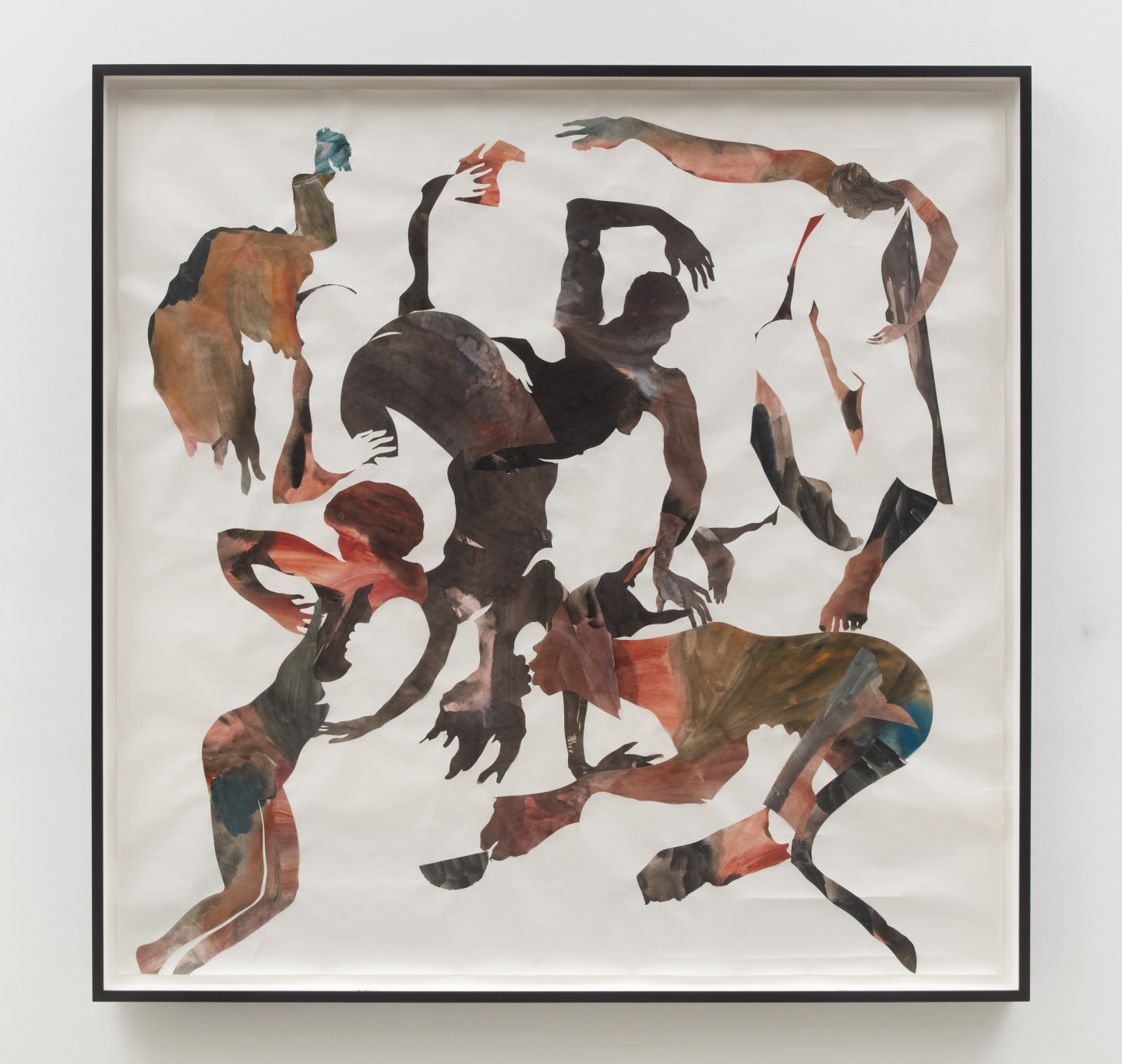
Kara Walker through December 14, 2024
Sikkema Jenkins & Co. | 530 West 22nd Street
Besides the beauty, invention, satire, history, and art historical references; besides the exposure of—and to—the violence at the core of Western Society; besides the depictions of slave and slave master, and the dynamics between them; besides the gesturing towards a Black feminine futurity, what I appreciate about Kara Walker’s work is the layers. I still look back in awe at the accomplishment of her monumentally-scaled Sphinx A Subtlety, or the Marvelous Sugar Baby, 2014, in Brooklyn’s then-closed Domino Sugar Refinery, how the white powder from the sculpture fell to the floor, and how visitors tracked it into the world, creating a new layer of participation and complicity—in the circus-like racial and sexual objectification of the Black figure as well as in the brutal legacy of sugar production. (On plantations in Haiti, slaves had an estimated life expectancy of three to six years harvesting sugarcane.) In the artist’s current show at Sikkema Jenkins, “The High and Soft Laughter of the Nigger Wenches at Night, in the Colorless Light of Day,” the layers of history and image are still present.

The exhibition is expansive, featuring large-scale collaged group scenes that, compositionally and with their palette, recall landscapes. Predominantly Black figures are cut from paper, in Walker’s signature silhouette style, but here—in a departure from past work—the paper has been painted earthy watercolor hues, signifying humanity’s entwinement with nature. The overlapping figures are sometimes headless, limbs are separated and dangling, or they are attached haphazardly, creating unsettling images of war. More intimate watercolors and ink drawings set off the vastness of the framed collages, while bronze busts (related to Walker’s interactive, mechanized installation now on view at SFMOMA) convey a sense of Black dignity, contrasting with the nearby scenes of abjection. Positioned away from the walls, as though in a garden, the sculptures on plinths create a necessary sense of depth in the gallery, which might otherwise be lost with the works on paper behind frames.
In the massive collage The Garden of Mundane Eschatologists, 2024, Walker’s spray of fragmented pieces could reference Matisse, Pollock, Picasso’s Guernica, 1937, or Faith Ringgold’s Die, 1967 (from her “American People” series). In other works, with their entangled figures, their reaching gestures, and off-handed ballet (I even discerned a yoga pose), de Kooning is also there. And, at a time when Black choreography and dance history are particularly visible—“Edges of Ailey” is on view at the Whitney Museum and Bill T. Jones has recently restaged his seminal 1994 work Still/Here—Walker’s work enters the conversation.

The exhibition’s power is in its smaller works. Two stand out. In the watercolor-and-graphite No Land in Sight, 2024, a reference to the Middle Passage and the immense fear slaves experienced, a Black woman is in the ocean on a board shaped like a tongue, her body the shape of a seal, her foot tethered to wreckage. Her face is upright, determined; she is a survivor, perhaps, of some present-day Clotilda. She paddles into the ocean, facing the unknown.
Throw Me Anywhere, also from this year, shows a naked Black woman being attacked by a bird. A symbol of freedom? Democracy? She is bleeding from her vagina. A red cloud of blood fills the paper, speaking to themes of birth and motherhood, the blood necessary for creation, as well as the bloodletting caused by violence against Black bodies, specifically against Black women.

The last lines of a paper delivered by Audre Lorde in 1980 come to mind:
We have chosen each other
at the edge of each others battles
the war is the same
if we lose
someday women’s blood will congeal
upon a dead planet
if we win
there is no telling










 in your life?
in your life?

